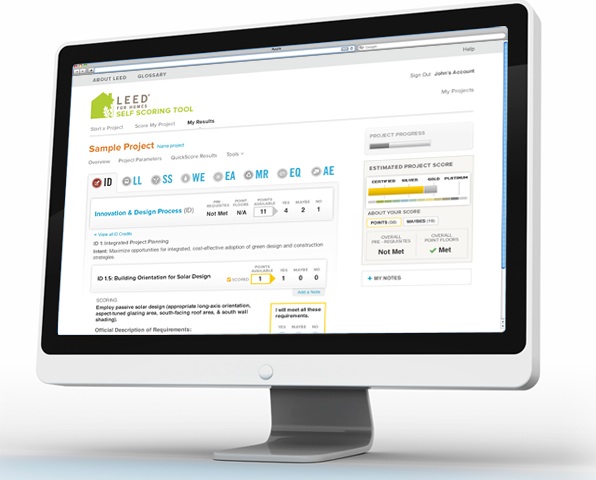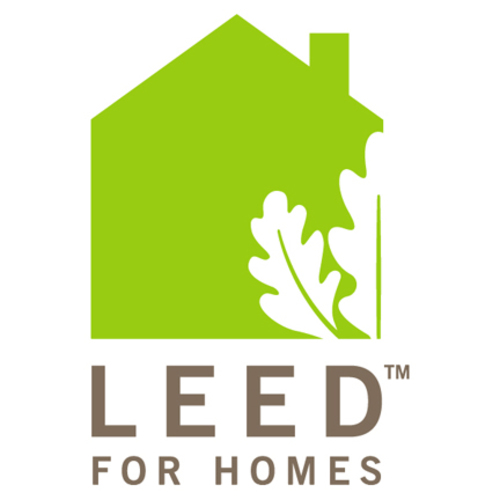Image Credit: U.S. Green Building Council
Image Credit: U.S. Green Building Council The Quick Score program posts a rough prediction of the certification level a project might achieve, based on answers to a series of questions about project details. Once a user responds to all Quick Score questions, the program produces a category-by-category breakdown of approximate scoring results. For users who want to go into further detail, the scoring tool allow them to view the requirements and scoring options for each mandatory and optional measure in LEED for Homes and assign their own predicted scores to estimate their LEED certification level. While the Quick Score path can be completed in about 5 minutes, this process typically takes 30 to 45 minutes to complete, USBGC says.
For all the awareness prospective homebuyers and homeowners might have of the LEED brand, it’s reasonable to expect many of them haven’t dug into the details of its residential rating system, LEED for Homes. Last week, the U.S. Green Building Council, which has developed nine green-building rating systems focused on construction and on maintenance and operations, unveiled an online LEED for Homes scoring tool designed to help consumers acquaint themselves with the program, allow builders and designers to prepare fairly detailed strategies for greening their projects, and, along the way, help USGBC market its rating system.
Announced at the 2011 RESNET Building Performance Conference, in Central Florida, the LEED for Homes Scoring Tool is presented on the USGBC web site in two versions – the consumer-friendly Quick Score path and the detail-intensive Credit by Credit path. To make use of the Quick Score tool, users don’t have to be especially green-building conversant, but they do need to enter basic information about a specific project, including its interior square footage; the lot size and other features about the site; ambitions for indoor air quality, energy efficiency, and water efficiency; expectations for recycling of construction waste; and other goals for the project.
Once all the Quick Score questions have been answered (it takes about five minutes to click through the prompts on this path), the tool posts a results summary that includes estimates of how the project might fare in each of eight categories: innovation in design process; location and linkages; sustainable sites; water efficiency; energy and atmosphere; materials and resources; indoor environmental quality; and awareness and education. The program also posts a small graphic showing roughly which of the four LEED ratings levels – certified, Silver, Gold, or Platinum – the project might achieve.
From general predictions to small details
With a mouse click on the program’s “show scoring actions” button, Quick Score users then have the option of exploring exactly how they might achieve the predicted scores. This is a segue into the vastly more detailed version of the tool, the Credit by Credit path, which describes each credit requirement and allows users to indicate their intentions for addressing it.
The idea is to not only keep a running tally of points a project should earn in each certification category, but also verify that the project will meet certification prerequisites and minimum-point requirements. Consumers armed with enough data about their projects certainly could dig into this, although Credit by Credit seems like a better fit for homebuilding teams looking to develop a variety of certification and management strategies for a single project or for multiple projects.
As a marketing tool, the new LEED Scoring Tool’s value remains to be seen, although USGBC sounds confident users will at least find its simplicity attractive. “It is one of the simplest tools on the market for green home building that anyone can use,” USGBC’s vice president of residential market development, Nate Kredich, said in a press release. “The credit by credit path encompasses the entire LEED for Homes program, showing you that you may be closer to achieving LEED certification than you think.”
For Carl Seville’s review of the Scoring Tool, see LEED for Homes Online Scoring Tool Needs a Lot More Work
Weekly Newsletter
Get building science and energy efficiency advice, plus special offers, in your inbox.
















0 Comments
Log in or create an account to post a comment.
Sign up Log in